As I read through all 514 pages of a paperback copy of E.L. James’ notorious and truly awful erotic novel Fifty Shades of Grey, I tried to keep my chin up.
In spite of the book’s criminally underdeveloped characters, utter lack of satisfying description, limited vocabulary and deplorable writing, I could see how this pile of garbage could be compressed into a very interesting diamond. I could see the great film that could come out of this terrible novel.
What makes Fifty Shades of Grey so difficult to read is the constant waffling inner monologue of protagonist Anastasia Steele (played by Dakota Johnson in the film). This paired with the nonsensical behavior that comes from an immature writer’s not allowing for a character’s motivation, and we have a quite a task for the screenwriter.
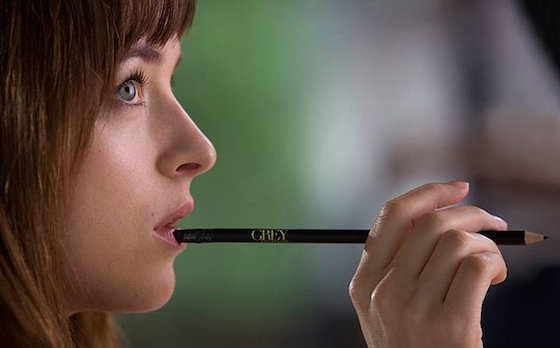 Kelly Marcel does an admirable job with her adaptation. Marcel eases or corrects many of the plot inconsistencies, and makes the wonderful (and absolutely spot on) choice to discard the entirety of Anastasia’s inner monologue. My worst fears of voice over had been assuaged.
Kelly Marcel does an admirable job with her adaptation. Marcel eases or corrects many of the plot inconsistencies, and makes the wonderful (and absolutely spot on) choice to discard the entirety of Anastasia’s inner monologue. My worst fears of voice over had been assuaged.
The job of translating the screenplay from page to screen fell to director Sam Taylor-Johnson. Putting the script in the hands of an artist and a woman could have been a masterstroke that elevated something so banal to incredible heights. If you have never looked through Sam Taylor-Johnson’s moving-image work, you should. You may see why I was guardedly hopeful entering the theater.
Exiting, I can say my optimism was not without merit, but the film falls far short of its potential.
Let’s talk about why the film, Fifty Shades of Grey, fails.
Underdeveloped Characters
The only traits I can, with any certainty, attribute to Anastasia Steele and Christian Grey (played by Jamie Dornan) are the following.
Ana is in her early twenties, studies Victorian literature, has messy brown hair, and is smart yet meek. She has never had sex, not because of some restrictive upbringing, but for the simple reason that she has never prioritized romantic relationships.
 Christian is in his late twenties, is a billionaire business mogul in the telecommunications industry, is controlling, adopted, and may have been traumatized when he was introduced to sex and BDSM culture by one of his mother’s friends when he was 15.
Christian is in his late twenties, is a billionaire business mogul in the telecommunications industry, is controlling, adopted, and may have been traumatized when he was introduced to sex and BDSM culture by one of his mother’s friends when he was 15.
You can see that we have a base, but these characters need so much more to become real, and for their actions to mean more than those of a complex puppet or the shallowest of human beings.
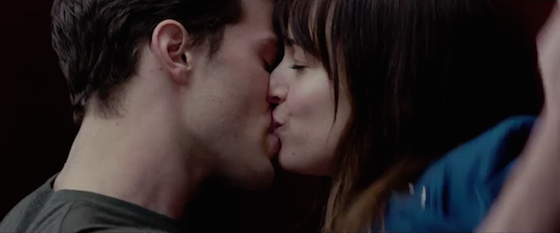 Marcel cleans up the plot, adds self-referential humor to ease a couple of dry scenes, but never adds to the mostly blank slates of Ana and Christian. By removing Ana’s inner monologue, Marcel clears the way to develop the characters, but never does. The questions of why a billionaire pursues a young college woman who he has interacted with only briefly, and why this smart young woman wouldn’t be extremely skeptical of this man’s advances are never addressed through the characters.
Marcel cleans up the plot, adds self-referential humor to ease a couple of dry scenes, but never adds to the mostly blank slates of Ana and Christian. By removing Ana’s inner monologue, Marcel clears the way to develop the characters, but never does. The questions of why a billionaire pursues a young college woman who he has interacted with only briefly, and why this smart young woman wouldn’t be extremely skeptical of this man’s advances are never addressed through the characters.
The Source Material and Its Audience
Though an artist had been hired to direct Fifty Shades of Grey there was no way that Taylor-Johnson would ever be given the leeway to make a truly stunning film. It would simply diverge too much from the source. Concerns about alienating the audience that devoured 100 million copies of the book did not allow for a freer hand.
When the movie is self-referential and funny, it works and works very well. The contract scene and the negotiations that follow are genuinely hilarious. Taylor-Johnson is giving the viewer the wink-and-nod needed to ease the awkwardness of the moment. This also allows the moment to become allegorical. Most adults have had to negotiate the parameters of their own romantic relationships. Even though most of us do not do this with contracts across a conference table, we can sympathize and laugh at the moment.
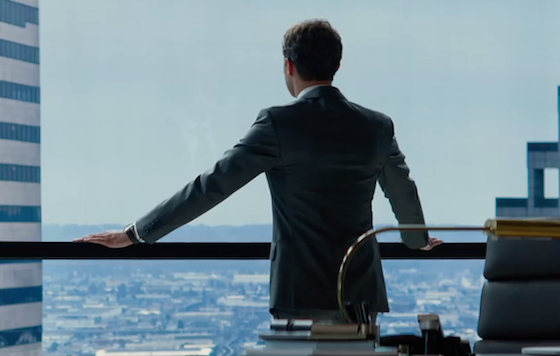 Then there are the dark and disturbing moments. The final scene is troubling and violent in ways that it must be.
Then there are the dark and disturbing moments. The final scene is troubling and violent in ways that it must be.
If Taylor-Johnson had been able to throw the throttle back and forth between funny and dark, Fifty Shades of Grey would have been a delightful surprise. Unfortunately the book calls for Christian to come from a crack-addled prostitute mother, which necessitate scenes of soap opera like melodrama. The weight that these moments are given ruptures the power of the funny and disturbing moments. It becomes impossible to see the film as anything other than an extension of a stupid book.
The Power of the Male Gaze and Our Cultural Fear of Female Desire
The audience for this film is women. This seems pretty clear to me. From women in college who read the book for a giggle or two, to the 40ish married mother who read it for an escape, heterosexual women seem the obvious audience for this film.
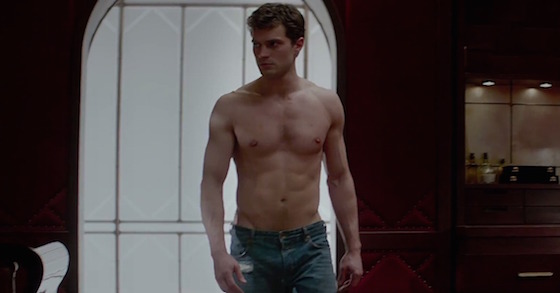 Because of its audience, I anticipated that Fifty Shades of Grey would be filled with medium shots of Dornan’s abs, legs, backside, and perhaps even a sneak peek at a penis even if that hit the screen in a tasteful backlit silhouette. This is for the hetero ladies after all.
Because of its audience, I anticipated that Fifty Shades of Grey would be filled with medium shots of Dornan’s abs, legs, backside, and perhaps even a sneak peek at a penis even if that hit the screen in a tasteful backlit silhouette. This is for the hetero ladies after all.
My assumptions about Dakota Johnson’s nudity were that these moments would come in the form of extreme close ups. The skin puckering into goose bumps, the blood rising in her cheeks, if you want to get a little more graphic perhaps show a close up of her nipple hardening and moistened lips exhaling, all of these could have put the viewer in her skin. We feel what she feels, and we gaze upon her objet du désir, the body of Christian Grey.
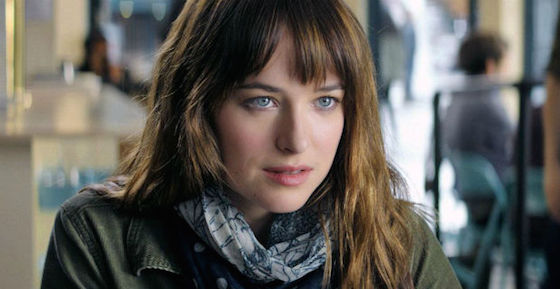 The film presented a far different picture.
The film presented a far different picture.
I could describe in particular detail the naked body of Dakota Johnson, while I only caught fleeting glimpses of Dornan’s nude form. If this is for women, why in the world are 80 percent of the nude shots of Johnson, and of those shots why are we so rarely close enough to her to feel the impact of her physical state?
My thoughts are that due to the lack of a rating system that would address an adult film without destroying that film’s ability to find distribution, and due to the restrictive attitudes towards female desire that continue to dominate the conversation in the U.K. and U.S., it is simply easier to use the visual language provide by popular narrative cinema.
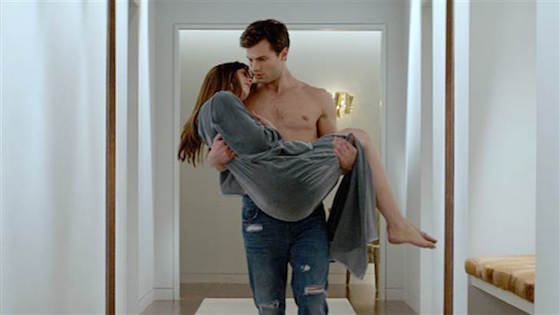 Show ‘em tits and a little side bush and you’ll get asses in seats.
Show ‘em tits and a little side bush and you’ll get asses in seats.
This is the tragedy of the film adaptation of Fifty Shades of Grey. 100 million copies of the novel were sold. There is a built in audience of women, and even some curious men. You have the opportunity to, in whatever small way, normalize the idea of female desire and sexuality. To overlook that, and instead give men a visual floorshow within a film that most heterosexual men will only go to reluctantly, is stupid and sad.
As a film Fifty Shades of Grey is a not good, not terrible adaptation of a wretched book. As a cultural event, Fifty Shades is a tragic missed opportunity.








Comments on this entry are closed.